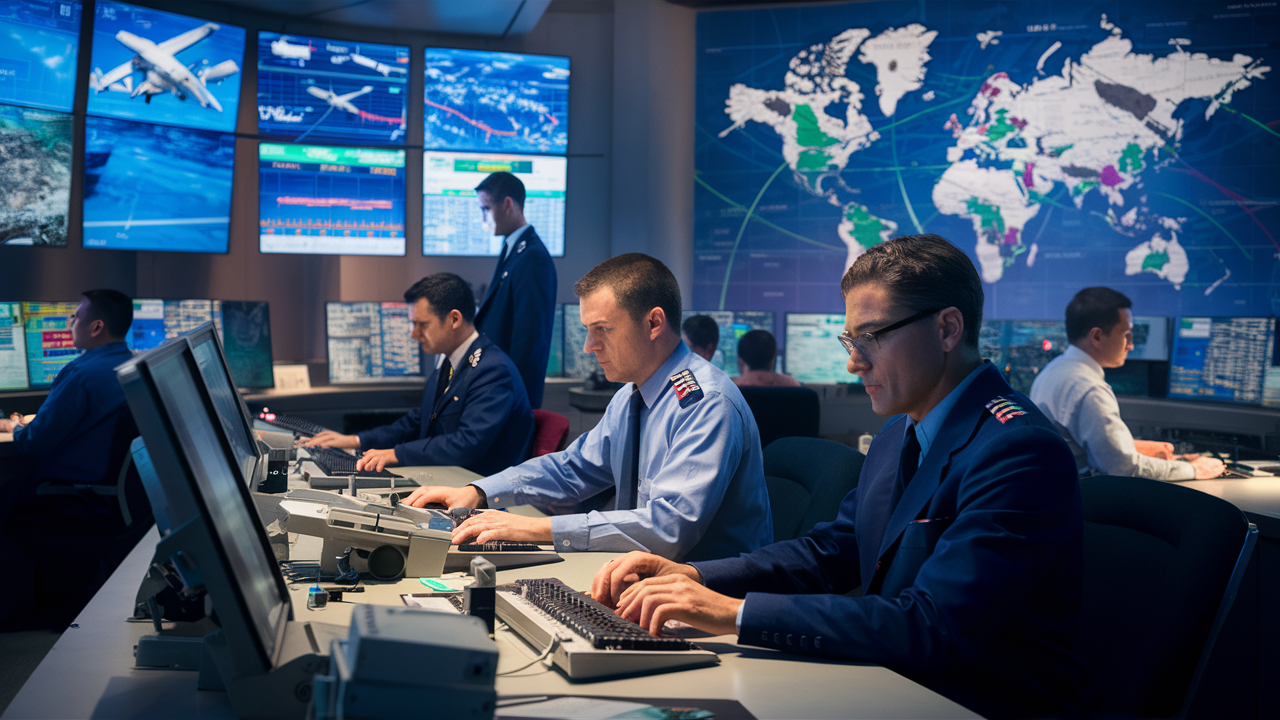Who controls plane routes?

Who Controls Plane Routes?
When you decide that you are going to fly and book yourself on a flight, board a plane, and fly towards your destination, do you ever think that someone has mapped out how that plane will fly? What determines if it goes straight to the destination or if it weaves back and forth to reach the destination? As with most aspects of commercial airline travel, identifying plane routes remains a multifaceted process that depends on several factors such as technology, legislation, air traffic control organizations, aviation authorities, airline companies, and sometimes even the military.
Navigation Technology
It is the invention of technology in navigation and flight planning systems that has made it possible to experience commercial air travel in today's society. Originally, pilots and air conductors relied on visual markers or references to guide their aircraft. However, as planes traveled higher and farther distances, it was important to introduce better radio and satellite-based navigation aids. These enabled planes to locate positions, select clear paths, avoid complex terrains, handle low illumination, and control their descents for a safe landing.
Today, airlines use integrated flight management systems that incorporate: Today, airlines use integrated flight management systems that incorporate:
- GPS satellite navigation
- These systems have built-in geographic airport and runway databases.
- The conditions of the weather and the wind as it happens
- Advanced planning functions
- Digital aeronautical charts
These systems provide significant automation to most aspects of the flight, and they constantly recompute the route for better fuel efficiency and safety. Still, they resolve their tasks using the framework of air traffic control (ATC) standards and guidelines.
Air Traffic Control
As it is apparent, planes have elaborate technical features; however, airspace requires regulation to ensure that planes do not knock into each other or spend much time circling. This crucial task is performed by air traffic control systems. There is a division of airspace into various horizontal and vertical zones and flight information regions, which are overseen by air traffic control.
They control flight through radio transmissions and ensure that aircraft are at fixed intervals away from each other. This makes it possible for the different routes and altitudes to be properly planned and synchronized to relate between planes. Various countries have different ATC systems, although they can include cooperation between both civil and military authorities. General management of ATC is done by national bodies such as the Federal Aviation Administration (FAA) in the USA.
ATC systems provide detailed route details of the airways on which airplanes are to navigate during the takeoff, climb, approach, and landing processes. Airline flight plans are required to be filed before this and have to fit into this structure well. This then allows for controllers to be able to sequence planes reliably. While the flight systems may depict some probable direct GPS route solutions, the flown routes must correspond to the prescribed ATC network.
Other Route Considerations
It should also be noted that, apart from the ATC instructions, the airline dispatch units further tweak the optimal routes determined by the flight systems. Some key factors they consider include: Some key factors they consider include:
- Height and coordination enhance appropriate winds to conserve energy.
- Staying clear of regions of potential severe weather or cross-country mountain waves.
- Flying around prohibited zones like prohibited military areas or political regions.
- Selecting between grand/primary carriers and more connected published itineraries.
As mentioned above, the pilot can request modifications during the flight for comfort reasons, safety concerns, or improvement of operational efficiency. However, any change in the flight plan due to traffic during the flight has to be approved by the controllers involved. As such, the system of each plane develops an original flight course while the ATC and airline dispatch monitor changes to synchronize.
Global Collaboration
When air travel is extended across countries, the systems need to be centralized. International organizations such as ICAO establish and provide guidelines on the most appropriate routes and various aviation rules and regulations recognized globally. Flight information regions are also often intertwined at the borders, which means that they need to be controlled collectively.
For instance, European airspace has been centralized and controlled by the Eurocontrol system, which is operated by controllers from each country. Coordination of similar multicountry interceptions takes place over Asian and African airspace. They also engage in terms of bilateral open skies agreements that allow each country's airlines to have open access to routes and airports of the other country. This has facilitated the development of a fairly integrated global airline network; this has been made possible by the interconnectivity of airline routes.
The Future of Navigation
Even though modern technologies in flight management have advanced tremendously and are now able to perform many of the navigation tasks routinely, the control of routes rests in human hands. However, as we gaze into the future, there is a possibility that increased automation and even AI may take more parts.
NASA and FAA's NextGen satellite-based flight system upgrades enable planes to choose higher, less obstructed routes with less interaction from controllers. Space programs also envision such designs as fully automated self-shedding planes operated through synchronized data networks as opposed to the control towers.
However, massive infrastructure and regulatory adjustments remain in place to block such a shift in management culture. Taking into account the overwhelming scale of interactions, today's combined interactions of flight systems, air traffic control, aviation bodies, and airlines are set to dictate routing for years even if automation has progressed to the point of fully autonomous planes! It is the human structures that define airspace that must continue to serve as the foundation for the safety and efficiency of our skies.
Call us at +1 8339022090 to secure the best deals on flight tickets today. Don't miss out on unbeatable prices for your next adventure!
